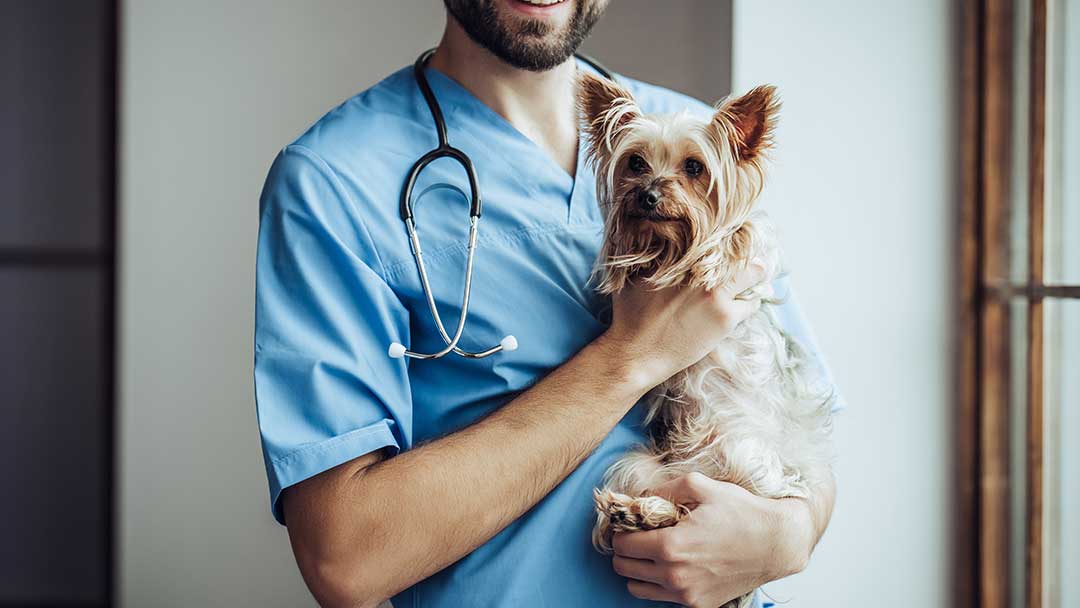
Skin Cancer Surgery in Dogs
Did you know that animals can get skin cancer too? Many dog owners aren’t aware that this can happen to their pet friends, but unfortunately it can.
Just like humans, tumours can develop in dogs, affecting the skin or subcutaneous tissue, which is the tissue just under the skin. While many of these tumours can be non-cancerous cysts or harmless moles or growths, they can also take the form of dangerous (malignant) tumours, including melanomas and carcinomas.
Today we’ll look at possible signs of skin cancer in dogs, tips on how to prevent this, and what to do if you think your dog may need to have a skin cancer removed.
What are the Signs of Skin Cancer in Dogs?
It’s best to know what to look out for and to regularly check your dog’s skin for any new lumps, bumps, or changes to existing lumps or bumps on the skin. We worry particularly about lesions that change or grow quickly, or bleed or ulcerate.
There are also other more general signs that may be present in dogs who have developed skin cancer, so keep an eye out for any of the below symptoms.
- Abnormal swellings
- Any sores that aren’t healing
- Loss of appetite
- Sudden weight loss
- Lethargy or loss of stamina
- Blood or discharge
If you notice any of these signs or symptoms, please seek veterinarian advice immediately.
Protecting Your Dog Against Skin Cancer
The sun is the biggest cause of skin cancer in animals, just as it is for humans. Like people, dogs can use sunscreen to block harmful UV rays and keep their skin protected from sun damage. If your dog loves lounging in the sun, ask your vet about sunscreen that is specifically formulated for animals.
You can also try to keep your pet out of the sun during the hottest hours of the day – between 11am and 2pm. Take your dog for his or her walk in the morning or towards sunset – it’ll be much cooler and more comfortable for them too.
How to Know if Your Dog Requires Skin Cancer Surgery
Only a qualified veterinarian will be able to make a diagnosis of your dog’s skin. If you’re worried about a particular lump or bump you’ve noticed on their skin, it’s best to contact a vet clinic and make an appointment.
If it is suspected a lump is a skin cancer you may be directed to a specialist vet, experienced in medicine and oncology (cancer). They will most likely need to do a biopsy, which involves taking a small amount of tissue from the tumour or growth to see if it’s benign or malignant. Your vet will then advise whether or not your dog needs to have surgery to remove the mass and the extent of surgery required.
Depending on the size and location of the tumour, the behaviour of the tumour, and the overall health of your dog, the surgery can either be a simple and quick procedure where only a small amount of skin is removed.
Alternatively, the surgery can be more complex and require meticulous planning, skin flaps, skin grafts, ongoing monitoring and treatment. Depending on the overall health of your pet the complete healing process could take months. Your dog or cat may need to stay in hospital for a couple of days following surgery to prevent complications and help wounds heal properly. Large metastatic skin tumours affecting the lower arms and legs are especially tricky to treat. These complex skin surgeries should only be performed by an experienced surgeon who specializes in skin reconstruction.
Choose a Vet That Truly Cares
When searching for a vet to care for the treatment of your dog, ensure you choose a qualified veterinarian, highly skilled at operating on cancers – especially if it is hard to remove, or requires skin and muscle reconstruction after removal.
Don’t be afraid to ask questions – any good veterinarian will understand that this is a stressful time for you as well as your pet. They should treat you with compassion and care and have the upmost consideration for your dog’s treatment and recovery.